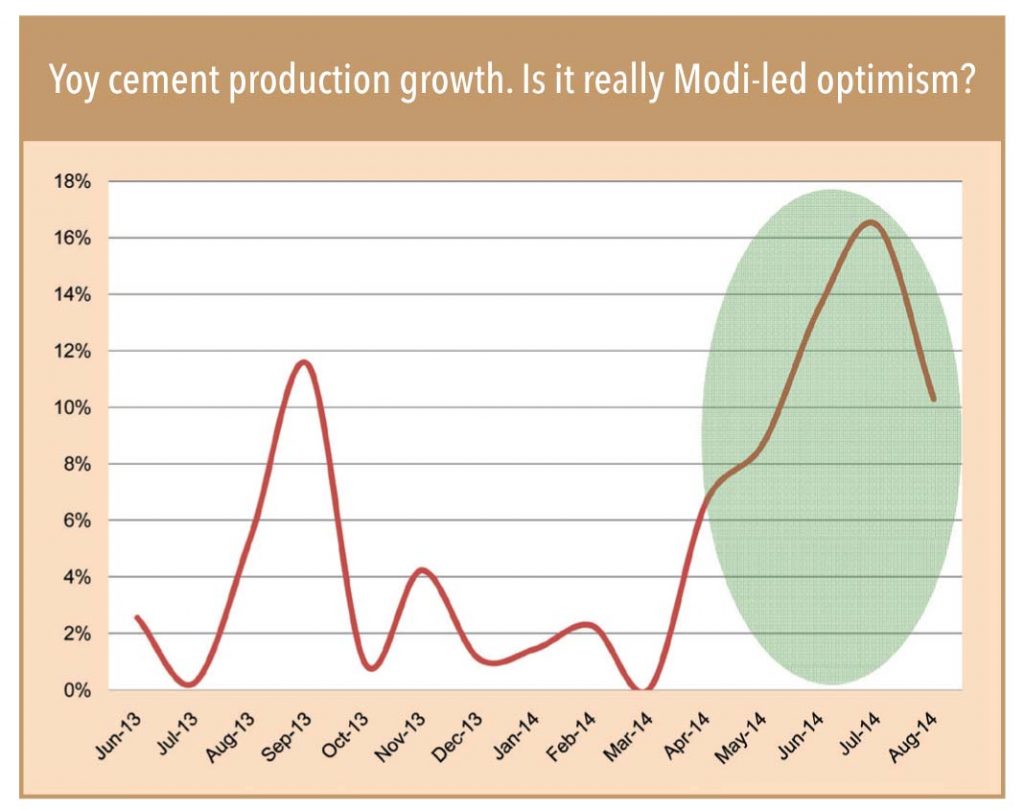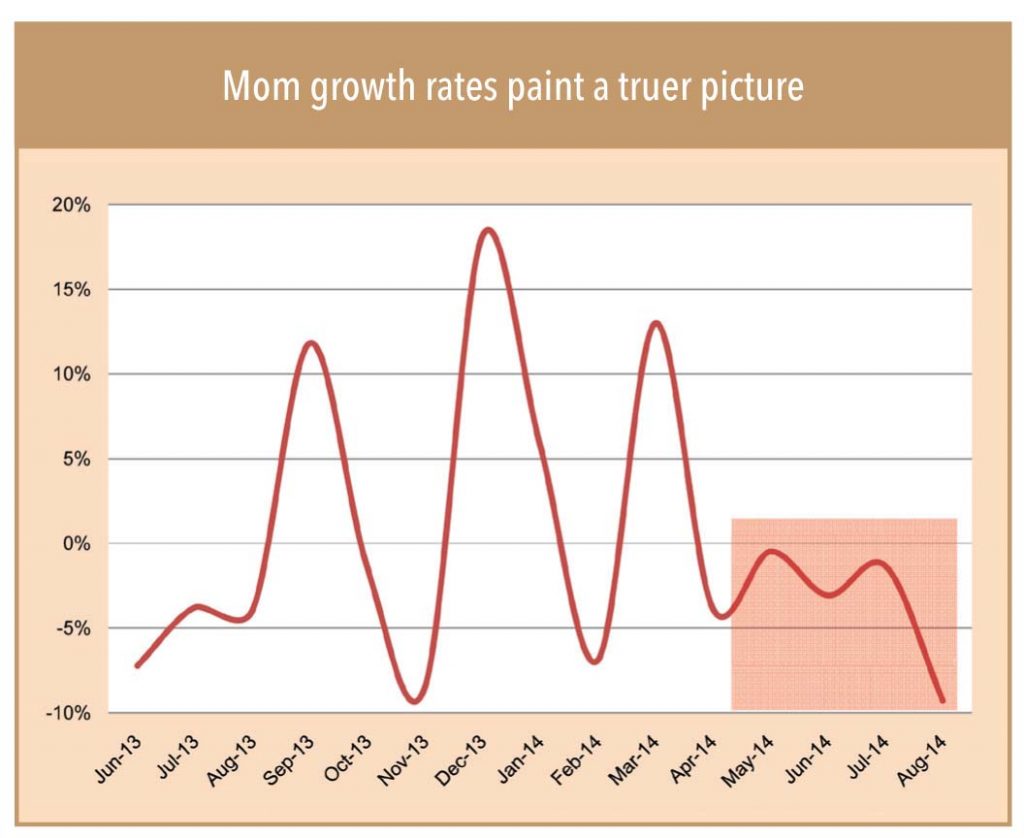After Narendra Modi took charge as India’s PM, yoy cement production growth rates have taken everybody by surprise. They just seemed tremendously high all of a sudden. However, ground checks revealed that barring optimism, nothing much has changed. Regional sales heads of leading cement manufacturers suggested that these numbers can be deceiving. The mom growth rates paint a different picture.Mom growth rates reveal that growth has been consistently negative since April 2014. Absolute production and consumption numbers have not grown. The periods that show materially high growth rates are either year-ending months for major cement manufacturers (when they try to achieve year-end targets by stocking materials at distributors/depot) or post-monsoon (September 2013). Other than these periods, there wasn’t any significant growth in production on a mom basis for the last 12 trailing months. Hence, it is unfair to assume that the situation has changed materially. Excluding very strong optimism surrounding demand revival, there seems to be no data that suggests a material improvement in demand. Flat mom numbers indicate that demand is only coming from existing projects, not new ones.


So what is the actual ground reality?
After the Modi government took charge at the centre, markets built in a lot of optimism on the revival of the economy. However, the reality is that (as of now) it is only optimism and nothing concrete. Due to this optimism, listed cement manufacturers’ valuations have touched new highs recently. It is not just the market’s valuations, extensive interactions with cement manufacturers over the last 6-8 months revealed that they actually share this optimism with the stock market.
The BJP government’s election manifesto contained many firm, strong, and clear statements about development — this reinforced investor confidence in sectors such as cement, which is considered a proxy to the growth of the economy.Since cement demand is always derived, with several focused policy and development related initiatives (proposed), the government could potentially be the single-largest customer of the cement industry.
A lot of recent initiatives of the new government seem to be in tandem with their election promises. The BJP’s manifesto talks specifically about the lack of basic infrastructure and housing in India and measures to correct this.
Here is a quick analysis of BJP’s manifesto:
Manifesto – on centre-state relations:
We will place Centre-State relations on an even keel through the process of consultation and strive for Harmonious Centre-State relation.
Our Government will be an enabler and facilitator in the rapid progress of States. We will evolve a model of national development, which is driven by the states.
Power is currently concentrated in Delhi and State Capitals. We believe this power should be genuinely decentralized.
Implication: The relationship between centre and states will get better with faster allocation and disbursement of funds, which is likely to speed up execution of various developmental and infrastructure
projects in states.
Current status: No major activity on this yet. Many of the larger states are still in the election phase and a few states are still in the process of finishing government formation. Bureaucrats are busy defining portfolio allocations and arranging meetings within themselves. Centre and state relations will become clearer once state government elections are out of the way and firm governments settle down.
Presently, we see that there is a vast disparity between different regions of the country along developmental parameters, particularly between the western part and the eastern part. Despite their richness in both, natural as well as human resources, eastern part of India still lags behind.
We shall give the highest priority towards bringing the eastern parts of the country on par with western parts. To that extent, there shall be special focus and emphasis on the development of the eastern side of India.
Implication: Distinct emphasis on development of East India. If implemented, it will turn out to be highly beneficial to East-Indian cement manufacturers.
Current status: This is a long-term initiative and it will be unfair to expect dramatic changes and results within such a short span of time. The relations between the centre and some eastern states are not smooth, and could be impacting demand.
Put special emphasis on enhancing the connectivity within the region and to the rest of the country. There will be special emphasis on massive infrastructure development, especially along the line of Actual Control in Arunachal Pradesh and Sikkim. BJP will address the issue of Flood control in Assam and river water management.
Implication: Massive infrastructure development in the North East will mean double-digit demand growth, which may continue for many years, given the low base. This will benefit companies such as Dalmia Bharat (aggressively built positions in this region).
Current status: Modi has talked about the need to develop North-East many times in the past, even before he was elected PM. However, the concern area remains the lack of political friendship between the ruling states and the centre.
Regards Telangana – BJP is committed to do full justice to Seemandhra and address the issues of development and governance of Seemandhra and Telangana.
Implication: Supports development of new states in South India.
Current status: Significant potential demand revival with the proposed development of new states. No action yet.
Subscribe to enjoy uninterrupted access